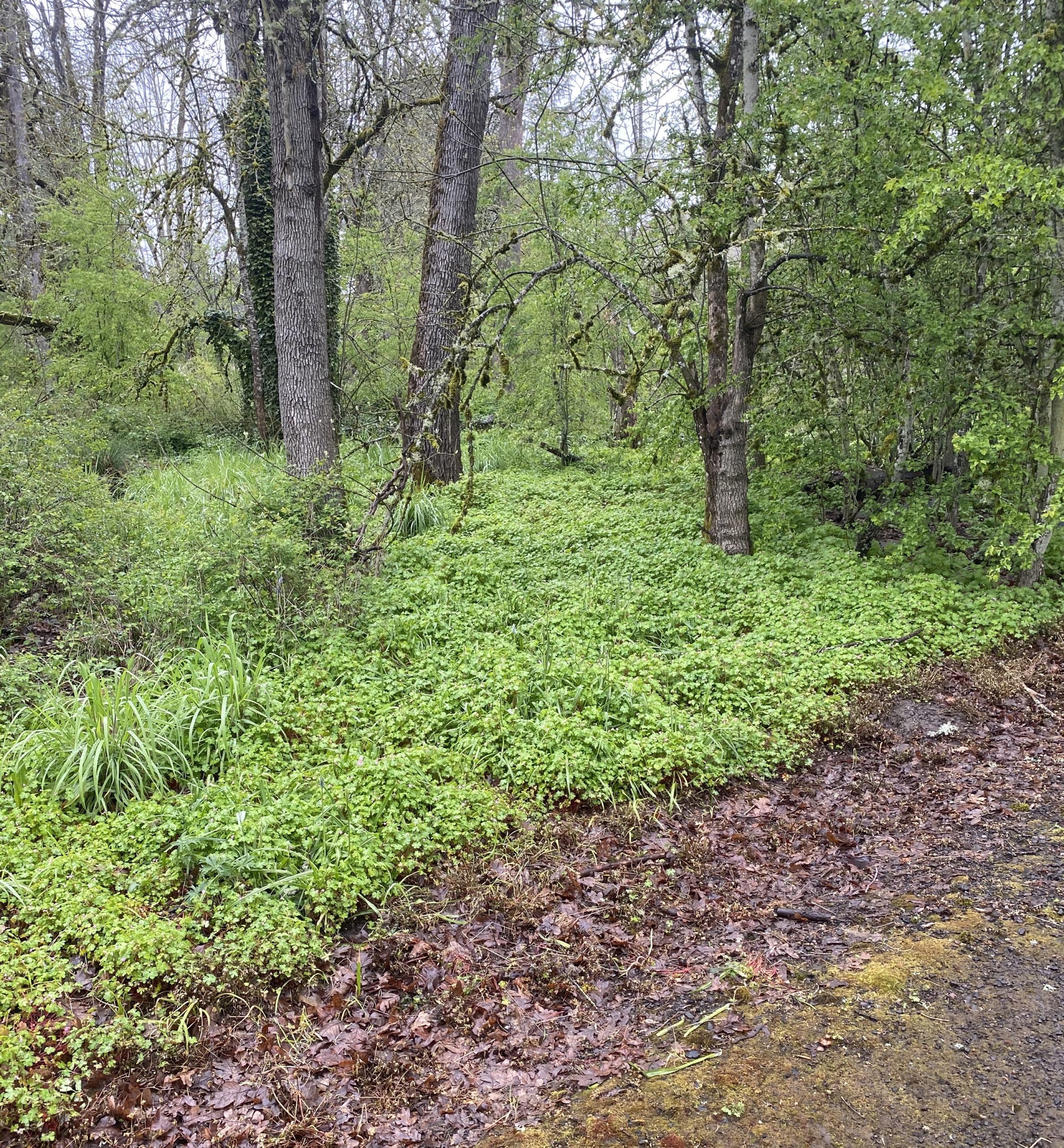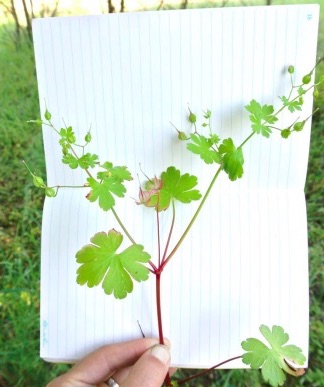By Barbara Fisher, OLWC Board Member
A few years ago when my OLWC colleague, Master Naturalist, Mike Buck started talking about a super spreader invasive plant, shiny geranium, I was puzzled. I wanted to know what it looked like.
It hadn’t, to my knowledge, appeared in restoration sites that I had worked in, Freepons Woods or Hallinan Woods. It took a while but I finally became familiar with it. And the more I learned about it, the more disturbed I became.
It arrived in Freepons Woods and is doing exactly what it is really good at, spreading like crazy. It started growing along the forest edge and has now moved into the forest floor.
Native to Europe, Asia and Northern Africa, it was first identified in Oregon in 2011, a nursery escapee. Since then it has invaded ash and oak tree groves, woodlands, savanna’s, riparian corridors, roadsides, pastures and private yards. Maybe even yours.
I learned that shiny geranium is an annual herbaceous forb with round to kidney shaped waxy leaves that have 5-7 lobes, up to 1.5” wide, often with reddish stems that can grow to 20” tall. Its small pink flowers grow in pairs that appear in spring through July. Every flower produces 5 seeds that are forcibly ejected up to 20′ without any wind. Does’t sound too bad. But the crazy part is that one plant can produce up to 730 seeds, 100% viable, that germinate after the first rainfall. And the seeds are viable for 2 years. The seeds can also germinate in the fall allowing it to dominate in winter.
This quick, expansive invasion, considered exponential, interferes with the emergence of native plants like licorice ferns. The state of Washington lists shiny geranium as a class B noxious weed, Oregon as a B listed weed. It has been identified in 15 Oregon counties. It prefers moist soil and shade but can grow in grass and moss. It can grow back from its roots if mowed.
What to do if you have it? It is best to remove it before it flowers, or at least before it goes to seed which is a short window. A small patch can be hand pulled. Larger areas will need to be treated.
For a more thourough discussion of this invasive plant and treatment options, read this study done in Washington State at the Ridgefield National Wildlife Refuge.

Photo taken at Uplands Park by Mike Buck

Photo by Ridgefield National Wildlife Refuge
